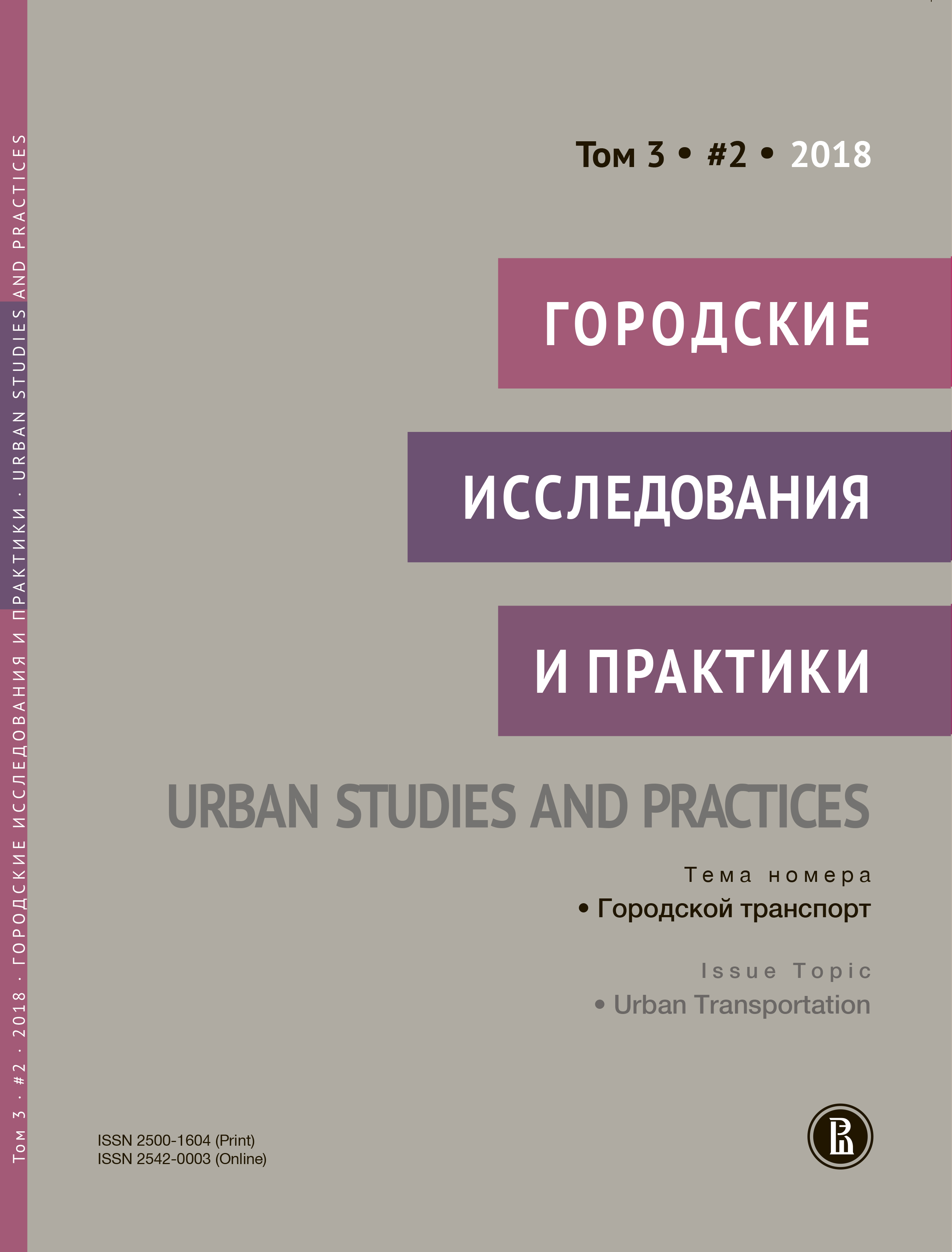The workings of the turnstile system as an element of passengering
Abstract
We consider turnstiles as an integral part of the passenger experience. Turnstiles are a control technology to decrease fare evasion, but also define traffic rules for the interaction between passengers in the transport space and which normalize the corporeality and body experience of passengers. Turnstiles turn the variety of passenger corporeality into the normalized units which form the calculated and controlled passenger traffic. At the level of passenger experience, turnstiles organize a special sequence of actions for passengers in the pre-and post-turnstile zones, serve as a meeting and farewell point, ensure the “fairness” of emerging landing lines and the choice of seats by passengers. Turnstiles also often serve as break points and interrupt the interaction between passengers. Breakdowns and unforeseen situations often happen with turnstiles.
For smooth operation, they need help and understanding from passengers and staff. Some categories of passengers (children, “pouched”, elderly and large-sized) have difficulty passing through the turnstiles, causing inconvenience to themselves and others. Turnstiles have left a significant imprint on the passenger experience of Muscovites, thereby being a direct implementation of the transport policy for the formation of a new type of passenger. The empirical material of the study consists of videos of the practice of using turnstiles in various types of transport in Moscow, collected in December 2017 and in the spring of 2018.1
[1] This research is supported by the Russian Science Foundation grant (RSF No17-78-20164) “Sociotechnical barriers of the implementation and use of information technologies in Russia: sociological analysis”.
Downloads
References
Бондаренко М. (2017) В Москве с 1 января уберут турникеты из больших автобусов // РБК. 17 ноября. Режим доступа: [https://www.rbc.ru/society/17/11/2017/5a0e31069a794757c260590d](https://www.rbc.ru/society/17/11/2017/5a0e31069a794757c260590d) (дата обращения: 20.09.2018).
Гершман А. (2018) Возвращение контролера. Почему московские власти решили отказаться от турникетов на наземном транспорте // Strelka Mag. 27 февраля. Режим доступа: [https://strelkamag.com/ru/article/ticket-inspector](https://strelkamag.com/ru/article/ticket-inspector) (дата обращения: 20.09.2018).
Возьянов А. (2014) Контроль, доверие и пассажирское знание: трансформации оплаты проезда в городском транспорте Европы и постсоветских стран // Сделано в Европе: взгляд российских исследователей. СПб.: Норма. С. 96–126.
Возьянов А., Кузнецов А., Лактюхина Е. (2017) Субмобильности, или о множественности режимов движения в городе // Этнографическое обозрение. Т. 6. С. 30–43.
Гофман Э. (2009) Ритуал взаимодействия. Очерки поведения лицом к лицу. М.: Смысл.
Гоффман Э. (2017) Поведение в публичных местах: заметки о социальной организации сборищ. М.: Элементарные формы.
Де Лаэт М., Мол А. (2017) Зимбабвийский втулочный насос: механика текучей технологии // Логос. Т. 27. No 2. С. 171–232.
Иванова А. (2014) Сумчатые. Хореография пассажиров городского транспорта // Микроурбанизм: город в деталях. М.: Новое литературное обозрение. С. 70–93.
Красников Г. (2018) Ушла эпоха! // LiveJournal. 15 октября. Режим доступа: [https://griphon.livejournal.com/408856.html?fbclid=IwAR12X5dBYvjuUl2AHZeeR4uTXTbhpsNlwuh-fhtVmHJZNa5LbviuoAdyCI8](https://griphon.livejournal.com/408856.html?fbclid=IwAR12X5dBYvjuUl2AHZeeR4uTXTbhpsNlwuh-fhtVmHJZNa5LbviuoAdyCI8) (дата обращения: 20.09.2018).
Николаев В. (2005). Советская очередь: Прошлое как настоящее // Неприкосновенный запас. Т. 5. No 43.
Скотт Д. (2005) Благими намерениями государства. Почему и как проваливались проекты улучшения человеческой жизни. М.: Университетская книга.
Шумский А. (2017) Турникеты исчезают с нового года // Пробок нет. Блог о транспорте и жизни. 21 ноября. Режим доступа: [https://proboknet.livejournal.com/854739.html](https://proboknet.livejournal.com/854739.html).
Adey P., Bissell D., McCormack D., Merriman P. (2012) Profiling the Passenger: Mobilities, Identities, Embodiments // Cultural Geographies. Vol. 19. No. 2. P. 169–193.
Barabino B., Salis S., Useli B. (2014) Fare Evasion in Proof-of-payment Transit Systems: Deriving the Optimum Inspection Level // Transp. Res. Part B: Methodol. Vol. 70. P. 1–17.
Barabino B., Salis S., Useli B. (2015) What are the Determinants in Making People Free Riders in Proof-of-payment Transit Systems? Evidence from Italy // Transp. Res. Part A: Policy Pract. Vol. 80. P. 184–196.
Bissell D. (2010) Passenger Mobilities: Affective Atmospheres and the Sociality of Public Transport. Environment and Planning D: Society and Space. Vol. 28 (2). P. 270–289.
Currie G., Delbosc A. (2017) An Empirical Model for the Psychology of Deliberate and Unintentional Fare Evasion // Transp. Policy. Vol. 54. P. 21–29.
Dauby L., Kovacs Z. (2006) Fare Evasion in Light Rail Systems // Proceedings of Joint International Light Rail Conference. St. Louis, Missouri.
Delbosc A., Currie G. (2016) Four Types of Fare Evasion: A Qualitative Study from Melbourne, Australia // Transp. Res. Part F Traffic Psychol. Behav. Vol. 43. P. 254–264.
Goffman E. (1983) The Interaction Order: American Sociological Association, 1982 presidential address // American Sociological Review. Vol. 48. No. 1. P. 1–17.
Killias M., Scheidegger D., Nordenson P. (2009) The Effects of Increasing the Certainty of Punishment: A Field Experiment on Public Transportation // Eur. J. Criminol. Vol. 6. P. 387–400.
Kooreman P. (1993) Fare Evasion as a Result of Expected Utility Maximisation: Some Empirical Support // J. Transp. Econ. Policy. Vol. 27. P. 69–74.
Laurier E. et al. (2008) Driving and ‘Passengering’: Notes on the Ordinary Organization of Car Travel // Mobilities. Vol. 3. No. 1. P. 1–23.
Reddy A.V., Kuhls J., Lu A. (2011) Measuring and Controlling Subway Fare Evasion: Improving Safety and Security at New York City Transit Authority // Transp. Res. Rec. Vol. 2216. P. 85–99.
Ruppert E., Law J., Savage M. (2013) Reassembling Social Science Methods: The Challenge of Digital Devices // Theory, Cult. Soc. Vol. 30. No. 4. P. 22–46.
Sasaki Y. (2014) Optimal Choices of Fare Collection Systems for Public Transportations: Barrier versus Barrier-free // Transp. Res. Part B: Methodol. Vol. 60. P. 107–114.

